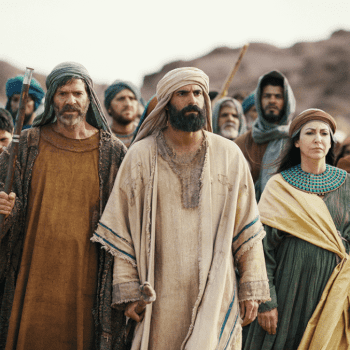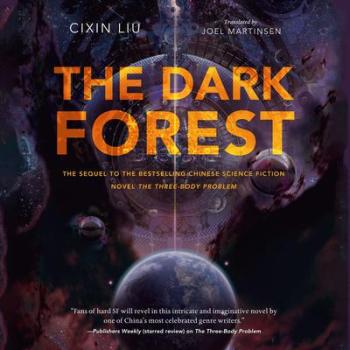The next chapter of The Historical Jesus: Five Views
is by Luke Timothy Johnson, and its main thrust is to offer a treatment of the Gospels as literature as a better way to approach the historical figure of Jesus. Johnson presents two opposing extremes, those who approach Jesus by faith through prayer and worship as the exalted Lord, and those who investigate Jesus “solely as a dead man of the past” (p.156) rather than as one living and present today. Mediating positions are referred to as “intellectually fuzzy” – among other things (p.156).
Nevertheless, historical study is important, and must treat Jesus “in precisely the same way as other human figures of the past…Historiography cannot be redefined because Jesus is its subject” (p.157) and can no more pronounce on his miracles or divinity than on similar claims made for other figures. Johnson advocates using “appropriate historiographical methods” (p.158) but rejects source criticism, which attempts to reconstruct earlier written documents and then gives these more weight than the literary sources in which they are embedded. Historical study can give some basic facts about Jesus, but it seems that the diverse portraits of Jesus in the Gospels cannot be either reconciled or circumvented to get at a unified reconstruction of what Jesus was really like. And so historical study, in Johnson’s view, is most useful as an aid to reading the Gospels “responsibly” (p.160).
In discussing the limits of history, Johnson emphasizes that “History is not simply ‘the past’ or ‘what happened in the past’ or a place that exists to which the historian has access. It is the result, rather, of a human process of critical analysis and creative imagination. Historians construct history rather than simply find it” (p.161). Historical study depends on sources, and so even at its best is dependent on what individuals in the past deemed worthy of recording, as well as what sources have survived for our use today (p.163).
Johnson then proceeds to offer a brief summary of how Jesus and his followers are depicted in the canonical Gospels. Once he has done so, he notes that a narrative account of someone’s life can get the individual’s character right even if it gets some particular facts and events wrong. And on this basis, Johnson emphasizes that the wide array of early Christian sources agree in presenting a Jesus who is characterized by self-sacrificing love (pp.174-176).
In conclusion, Johnson returns to an older distinction to summarize his stance: his interest is in the historic Christ of the Gospels and of the Christian faith, rather than a reconstructed historical portrait of Jesus. And his final sentence strikes me with the irony with respect to his choice for its first word: “Historically, Christianity has never been renewed or reformed by a historical Jesus, but it has always been renewed and reformed by closer attention to the Jesus of the Gospels” (p.177).
Robert Price is the first respondent, and here his views seem even more bizarre than they did in his own chapter. He writes “I think it quite likely that Jesus is an offshoot of an ancient version of Yahve depicted along the lines of Baal, Osiris, Dionysius or Attis: a heavenly hero or king who won his divine throne by defeating a dragon who initially devoured him, but then yielded to the resurrected savior” (p.179). The evidence for such a claim? Obviously there is none. Price proceeds to then posit the earliest devotees of this cult having no connection with Judaism. The evidence for such a claim? Obviously there is none, and far worse for Price, our earliest source, Paul’s letters, indicate that the central figure of his religious system bore the Jewish name Jesus, was already referred to as the Christ/Messiah/Anointed One, and Paul was having to argue that Gentiles could be included in this Jewish Messianic movement. And so Price helpfully illustrates what mythicism is; it is what one can imagine the origins of Christianity to have been when one is totally unconcerned with evidence, and one’s only constraints are the limits of one’s own imagination.
Crossan’s response challenges the rhetoric of Johnson’s stance, while Dunn’s response challenges Johnson on his dismissiveness, his rejection of source criticism, and his treatment of John as thought it were of equal historical value to the Synoptics. In contrast, Bock leans the other way, feeling that the divergences between the Gospels are even less than Johnson suggests. For Bock Jesus is to be known by faith, and the “living Jesus is just as real and as historical as anything humans can prove through corroborative means, as hard as that is to believe for many whose lives operate at a more material, naturalistic level” (p.193). And so Bock’s response already raises concerns that he may blur important distinctions and attempt to short-circuit or bypass historical method by introducing debates about metaphysical naturalism vs. supernaturalism. But in the interest of fairness it seems appropriate to wait until Bock has had a chance to present his own substantive chapter before discussing his views.
It is hard to offer substantive criticisms of Johnson’s chapter, since it is less about how he views the historical Jesus than about why and how he opts for a historic, literary Christ instead. Given the uncertainties of historical study, I can understand Johnson’s choice. I would simply add that, to the extent that one is not making the effort to investigate Jesus as a historical figure, it would be inappropriate to talk as though the figure one is talking about is Jesus as he probably actually existed in the past. I think that in some Christian contexts, scholars opt for a literary approach because it allows them to speak about Jesus as he is depicted in the Gospels, with hearers in churches assuming that the narrative under discussion is “what really happened” while the speaker discusses a literary depiction that may or may not correspond to anything in history. But to the extent that Johnson honestly addresses the limitations of historical investigation, the nature of its methods and the uncertainty of its conclusions, he is to be commended. But the rigors of historical investigation, including attempts at source criticism, are worth the effort, even if they provide relatively little that is reasonably certain and highlight how much we do not know. Figuring out what is certain or reasonably certain, however little it may be, is important. And being aware of and honestly acknowledging what is uncertain can likewise be a significant accomplishment.















